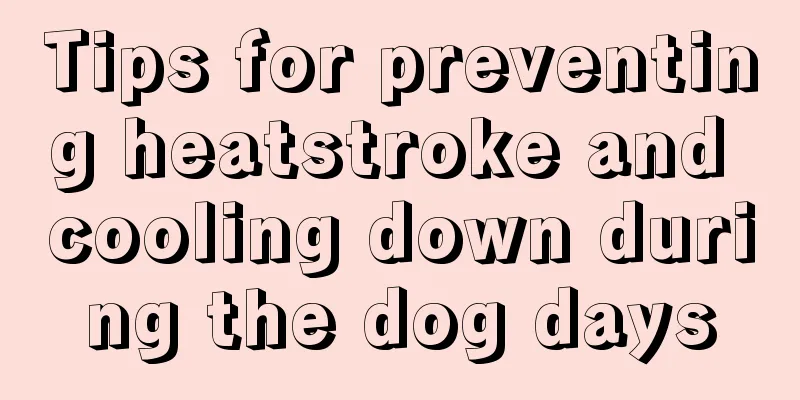How should respiratory infections be treated?

|
There are generally two main types of respiratory tract infections, one is upper respiratory tract infection and the other is lower respiratory tract infection. They are the most common type of infectious diseases, and patients must choose effective antibiotics during treatment, so that they can have a good therapeutic effect on the disease. Of course, there are many other treatment measures. Let’s take a look at how to treat respiratory tract infections! 1. Treatment principles There is currently no specific antiviral drug for upper respiratory tract viral infections. Treatment is mainly symptomatic, including rest, smoking cessation, drinking plenty of water, maintaining indoor air circulation, and preventing and treating secondary bacterial infections, especially for those with severe viral infections or the elderly and frail. 2. Specific treatment methods (1) Symptomatic treatment: Antipyretic and analgesic drugs can be used for patients with high fever and severe body pain, but collapse caused by excessive sweating should be prevented. Aspirin is prohibited in children to prevent the occurrence of Reve syndrome. For dry cough, you can use Kebiqing, brown mixture or codeine. Patients with high fever and severe poisoning symptoms should be given infusion and physical cooling, their condition should be closely monitored, and complications should be dealt with in a timely manner. If there is a secondary bacterial infection, appropriate antibacterial drugs should be used against the pathogen as soon as possible. Traditional Chinese medicine such as cold granules and isatis root granules can be used in the first 1 to 2 days of onset to relieve symptoms, but have no antiviral effect. (2) Antibiotic treatment: If there is a bacterial infection, sensitive antibiotics or other antibacterial drugs can be selected according to the pathogen. 1) Penicillin 6.4 million to 9.6 million U/d, divided into 2 to 4 intravenous drips. 2) First-generation cephalosporins: ceftriaxone 0.5 g each time, orally, 3 times a day; or cefazolin 4-6 g/d, divided into 2 to 3 intravenous drips; or cefradine 3-4 g/d, divided into 2 to 3 intravenous drips. 3) Macrolides: erythromycin 2g/d. Orally in 4 doses; or 1-2g/d. Intravenous drip; or roxithromycin 0.15 g, orally, twice a day; or azithromycin 0.5 g, orally. Once a day: 4) Quinolones: Levofloxacin, 0.4 g each time. Intravenous drip, 1 time per mouth; or ciprofloxacin, 0.4 g each time, intravenous drip, 1 time per day. (3) Antiviral drug treatment: Early use of antiviral drugs has a certain effect. It can reduce the amount of virus excretion, inhibit virus replication, alleviate clinical symptoms, and prevent the virus from spreading to the lower respiratory tract and causing complications such as pneumonia: 1) Amantadine: It is an M2 ion channel blocker that can block the virus from adsorbing to sensitive cells, inhibit viral replication, and is effective against influenza A. The medication is most effective if taken within 48 hours of onset. Dosage: 100-200 mg per day for adults, 100 mg per day for the elderly, and 4-5 mg per day for children mg/(kg·d); Usage: Orally in 2 doses, the course of treatment is 5 days; Adverse reactions: dry mouth, dizziness, drowsiness, ataxia and other neurological symptoms. 2) Methylamantadine dosage: 100-200 mg/d, taken orally in 2 divided doses, its antiviral activity is 2-4 times higher than that of adamantane, and has fewer adverse reactions to the nervous system. (4) Treatment with traditional Chinese medicine: The Chinese patent medicines that can be used include Qingrejiedu oral liquid 10 ml each time, taken orally, 3 times a day; or Shuanghuanglian oral liquid 10-20 ml each time, taken orally, 3 times a day. influenza (5) Potentially useful drugs or therapies 1. Vitamin C: It has been reported that large doses of vitamin C (8.0 g/L) can shorten the course of the disease and alleviate symptoms. 2. Zinc gluconate lozenges: In vitro experiments have shown that it has an inhibitory effect on rhinovirus, and clinical control trials have shown that the duration of symptoms is shortened, but there are many adverse reactions. 3. Breathing heated humidified air: Because the most suitable temperature for rhinovirus replication is 33°C, it is recommended to breathe heated humidified air to treat colds. If you want to treat respiratory tract infection well, you can take some anti-infection and antiviral antibiotics that clear away heat and detoxify. You should also pay more attention to rest, don’t smoke, drink plenty of water, keep the indoor air circulating, and try to avoid secondary bacterial infection, otherwise the respiratory tract infection will recur again, so you must pay attention. |
<<: What is the TCM treatment for kidney stones
>>: How should kidney stones be treated?
Recommend
What should patients with gastric cancer pay attention to during gastrointestinal decompression
Gastrointestinal decompression care is an importa...
The difference between conditioner and hair mask
Conditioners and hair masks are very common, and ...
The difference between sesame oil and sesame oil
In life, we all have the experience of eating hot...
What are the benefits of mint shampooing
Although washing hair is something that everyone ...
Can I wear glasses after rhinoplasty
Although rhinoplasty is a surgical plastic surger...
What should I do if I feel like my stomach is full of gas?
Some of my friends must have had this feeling, th...
Is it good to eat animal offal? What vitamins does it contain?
In life, I believe that many people like to cook ...
Rotavirus vaccine side effects and contraindications
After the birth of a newborn, the family must be ...
Stretching before and after exercise
Stretching exercises are required before and afte...
Experts reveal five behaviors that make young people more susceptible to stomach cancer
Teenagers generally pay less attention to taking ...
Black spots on the whites of the eyes indicate roundworms
People's normal eyes are divided into two typ...
Is fibroma a malignant tumor?
Fibroids are not malignant tumors, but are genera...
Introduction to nursing methods for colon cancer
Colon cancer is divided into three stages like ot...
What factors affect height?
Nowadays, almost everyone wants to be taller, whi...
Acne on the nose hole
Acne on the face is very common, but have you eve...









